Werewolf: California's crowded prisons
California fails to cope with its
crowded
prisons
Werewolf.co.nz September Issue
Original
Article
by Rosalea Barker
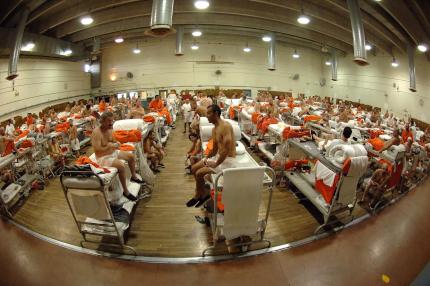 Every person in prison in
California
Every person in prison in
California
will one day be released. Take a deep breath
and repeat
after me: Every person in prison in California
will one day
be released. True, a tiny percentage of them
will be
released from prison to their Maker—by suicide,
deadly
assault, natural causes, execution, or as a result
of an
accident—but all the rest will be released into
society.
It bears thinking about long and hard
doesn’t it? And
California has thought about it long
and hard. According to
a 2007 expert panel report (pdf)
commissioned
by the CA Department of Corrections and
Rehabilitation
(CDCR), there has been more than a dozen
reports since 1990,
all recommending the same core ten
reforms:
1.
Stop sending non-violent, non-serious offenders to prison.
This particularly pertains to technical parole violators,
who could better be served in community based, intermediate
facilities.2. Once in prison, use a standardized risk and
needs assessment tool to match resources with needs and
determine appropriate placements for evidence-based
rehabilitation programs.Advertisement - scroll to continue reading3. Develop and implement more and
better work, education, and substance abuse treatment
programs for prisoners and parolees.4. Reform
California’s determinate [i.e. non-discretionary]
sentencing system to reward prisoners for participating in
rehabilitation programs and allow the system to retain
prisoners who represent a continued public safety risk.5.
Move low risk prisoners to community-based facilities toward
the later part of their sentences to foster successful
reintegration and save more expensive prison-based
resources. Sub-populations, such as women, the elderly and
the sick, are ideal candidates.6. Create a sentencing
policy commission or some other administrative body that is
authorized to design new sentencing statutes into a workable
system that balances uniformity of sentencing with
flexibility of individualization.7. Reform California’s
parole system so that non-serious parole violators are
handled in community based intermediate facilities and more
violent parole violators are prosecuted for new crimes.8.
Create viable partnerships between state and local
corrections agencies that would expand sentencing options,
enhance rehabilitation services, and strengthen local
reentry systems. Suggestions have been made that include
Community Corrections Acts (to get greater funding for local
criminal justice initiatives) and a Community Corrections
Division of the CDCR charged with developing
alternatives.9. Evaluate all programs and require that
existing and newly funded programs are based on solid
research evidence.10. Promote public awareness so that
taxpayers know what they are getting for their public safety
investment and become smarter and more engaged about
California’s prison system.
As I write this
on the last
weekend of August, 2009, the California State
Assembly
Speaker, Karen Bass, is trying to have a penal
reform
bill currently before the Assembly rewritten so that
it
will pass on Monday. The companion Senate bill
squeaked
through amid much acrimonious debate on Thursday
morning.
The legislation is part of a reform package
requested by
Governor Schwarzenegger (R) two years ago,
and is required
as part of a Budget deal to help create a
$1.2 billion cut
in Corrections expenditures.
In the
Senate, all Republicans opposed it,
and
four Democrats voted with them—the final vote was
21/19.
Later on Thursday, the companion bill was debated
even more
acrimoniously in the Assembly. It will have to be
severely
gutted in order to pass—in large part because
politicians
value their jobs more highly than they value
reasoned debate
and reform. Assembly members can serve
only three terms,
each of two years, and even those who
won’t be able to run
for Assembly again in 2010 but
have their eye on other
elected positions don’t want to
go on the record as being
“soft on crime”. The
inclusion of a new Sentencing
Commission in the bill is
particularly controversial and
will likely be
dropped.
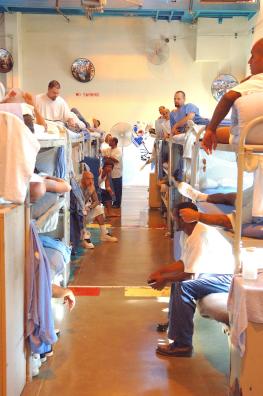 Responses
from
Responses
from
inside the door
Besides
the proximity of the 2010
elections, which include election
of the next Governor,
two other factors are reflected in the
timing of this
legislation: the budget deal mentioned
earlier, in which
the Governor asked the legislature to find
ways of
reducing the prison population by about 27,000 in
order
to save money; and a ruling by a three-judge panel of
the
Federal District Court saying that, because
the
inadequate health care provided by the CDCR amounts
to
“cruel and unusual punishment”—forbidden by the
US
Constitution—the prison population needs to be
reduced by
40,000 to a mere 137 percent of CDCR’s
design bed
capacity.
The CDCR Secretary’s response
to that August
4 ruling, which gave him 45 days to come
up with a two-year
prisoner number reduction plan, is
available as a video here. In it, Secretary Cate refers
to
the key components of the Governor’s plan to reduce
the
prison population: “parole reform; alternative
custody,
including the use of GPS technology for our aged
and infirm
inmates and inmates serving 12 months or less;
incentive
credits for inmates to achieve accomplishments
in prison
like a GED or a drug and alcohol program that
reduce
recidivism…. We think they are sound measures
that will
reduce our prison population in a safe way over
time.”
(GED stands for general education diploma, and
is the lowest
educational requirement for anyone
seeking
employment.)
The California Correctional Peace
Officers
Association (CCPOA), which represents the more
than 30,000
correctional peace officers working inside
California's
prisons and youth facilities, and the
state's parole agents
who supervise inmates after their
release, also supports the
Governor’s reforms,
including a sentencing commission.
(Peace officer is a
generic term in the US for any law
enforcement officer
charged with maintaining civil peace.)
At a recent forum on
California’s
correctional crisis, Michael Jimenez,
President of CCPOA, is
reported as saying that the
current sentencing scheme is
“so bad that he could not
imagine anything worse. The
CCPOA has been pushing for a
sentencing commission as well,
but very disheartened with
the political process around it.
It all revolves, said
Jimenez, around money; there is no
political fix for the
sentencing problem as long as our
policy calculations are
influenced by short term,
year-to-year tactics.”
It
should be noted that because
of its political
contribution history, the CCPOA is hugely
disliked in
California. An inmate of a state prison who has
a blog on
the San Francisco Bay Guardian website, in a
post
entitled What should government do?, writes
that
the “only rational solution to reducing the cost
of
imprisoning the populace is to change the sentencing
laws
and criminal code to a degree that reflects our
principles
as a free society in a way that makes sense.
Only when the
need for guards is lessened by a reduced
need for prisons
will there actually be any ground gained
on breaking the
stranglehold the CCPOA and other powerful
unions have on
California.” The same blogger had
earlier written that
releasing low-risk prisoners early
would be detrimental to
the remaining prison population
because it’s the low-risk
prisoners who work in support
services such as kitchens and
laundries, and detrimental
to California itself as low-risk
prisoners also form the
backbone of the CA Department of
Forestry and Fire
Protection’s wildfire fighting
teams.
 Responses
from
Responses
from
outside the door
Groups
representing police
officers intensely lobbied Sacramento
about the prisoner
early release plans when they were first
announced as
part of the Budget deal. In a June 22
Memorandum to the
Legislature, the California Fraternal
Order of Police,
California Narcotic Officers Association,
California
Peace Officers Association, California Police
Chiefs
Association, and eight groups representing police
and
sheriffs in Southern California cities and counties,
along
with the LA County District Attorney, said they
were
“extremely concerned about the damage to public
safety
that will be caused” by going ahead with the
plans.
But
by July 23, the LA Times was reporting that the California
Police
Chiefs Association was “very pleased” that the
proposed
legislation would include home detention and
target specific
offenders who behave well, are sick or
have the least time
to serve, instead of the blanket
release the CPCA had
feared. All that changed when the
bill that is being voted
on was written to include a
sentencing commission—a
concept the police adamantly
oppose. Perhaps because it will
reduce the number of
convictions and therefore the value of
property seized,
which, according to federal law, police
forces can sell
and keep the money for themselves.
The
“damage to
public safety” meme articulated by the CPCA
and other
organizations back in June and now being
repeatedly
conjured up in the legislative debates over the
current
bill is far from dead and likely never will be. It
is
such an easy meme to get going. The popular image
from
news reports is of parolees being returned to jail
because
of new crimes they commit. Naturally, from a
news
organization’s point of view—the more
spectacular and
gruesome the crime the better!
Furthermore, because of the
extremely high numbers of
parolees returned to prison in
California, the public is
easily persuaded to think that the
early release of
prisoners will result in thousands of newly
paroled
dangerous criminals roaming the streets.
Jeffrey Lin, an assistant professor
in
the Department of Sociology and Criminology at
the
University of Denver, and one of the authors of this article about parole violations
and
revocations in the June issue of the journal
Federal
Probation, told me in a phone interview that
“the 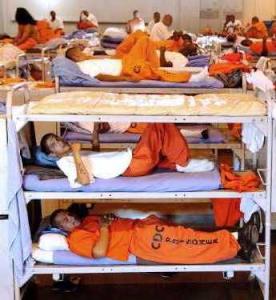 proportion of
prison
proportion of
prison
admissions comprised of those who’ve had parole
revoked
has been rising, and in California, it’s now
around 60
percent.” He was unable to provide current
figures on the
numbers for each type of parole
revocation, but in the
article the authors say that
“Over a third (35 percent) of
all the recorded parole
violations were for noncriminal, or
‘technical,’
violations. Two-thirds of technical
violations were for
absconding supervision, meaning that the
parolee missed
an appointment and/or his or her whereabouts
were
unknown.” [Emphasis mine.]
It might
surprise
legislators to know that the U.S. public
actually does
understand that a prison sentence is not
always the most
appropriate way of punishing a crime. A
June 2009 Zogby Poll (pdf)
commissioned
by the National Council on Crime and
Delinquency, which has
been in existence since 1907,
reported that over
three-quarters (77%) of those polled
believe alternatives to
incarceration do not decrease
public safety.
(A quick word
here about terms used in
speaking about the CA criminal
justice and penal systems.
All crimes are defined in the
California Penal Code, and
are classified as petty crimes,
misdemeanours, or felonies—which are crimes
punishable
by at least a year in prison or a fine
exceeding $1,000.
Some crimes are “wobblers”, that
is, they might be
decided in court to be either a felony
or misdemeanor. In
the Zogby Poll report they are using
“prison” to mean
state penal institutions and
“jail” for the place any
municipal jurisdiction such
as a city or county sends those
convicted of a
crime.)
One of the greatest problems with
the
California criminal justice and penal systems is
that,
until Schwarzenegger began forcing reforms in 2005,
the
Department of Corrections did not have the words
“and
Rehabilitation” in its title, and did not see
its role as
preparing inmates for a life outside the
prison walls. In
contrast, Arizona’s Getting Ready
program works with the
prisoner from the day he or she is
admitted to turn them
into what might be termed the key
that will eventually fit
the lock on their prison’s
door. In other words, prisoners
are rewarded for doing
well and striving to better
themselves, and by molding
themselves in that way, they earn
their
release.
Although it’s not available online,
except
snippets as part of a 2008 promo, episode 1502 of a
TV
series called Visionaries, which airs on
public
service television stations, reports that in
Arizona:
“Inmate-on-inmate violence is down by 37
percent,
inmate-on-staff assaults by 51 percent, and
inmate suicides
have been reduced by 33 percent. But the
real change comes
when the inmates are released. An
inmate who has gone
through the program is 35 percent
more successful on the
outside. That means they are more
likely to get jobs, stay
drug free and reunite with their
family. It also means they
are far less likely to commit
another crime.”
All of
that costs money, which
California obviously has so little
of that it’s
prepared to tackle the big issues around
crime in the
current bill. Those issues include what
constitutes a
jailable offence, what the sentence should be,
how much
of the sentence should be served, what can be done
to
improve parole and probation so recidivism can
be
reduced, and what rehabilitation services should be
provided
and where. County and municipal jurisdictions
oppose the
Governor’s early release plan because of the
strain it
will place on local services provided to the
formerly
incarcerated.
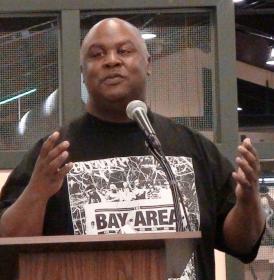 For an insight into what a
prisoner
For an insight into what a
prisoner
can expect to experience on their
release—early or
otherwise—I spoke with Rev. Harry
Williams, Jr., who has
years of experience with both
adults and juveniles in San
Francisco. He works with
Glide Church’s Youthbuild
Leadership Program, a
nonprofit. The website says that Glide Youthbuild is “a leadership
and
training program for 17-24 year-old youth from
San
Francisco’s poorest and most violent neighborhoods.
The
program includes onsite construction skills
training,
personal development and leadership skills
workshops, GED
preparation and the ability to earn
academic credit towards
a high school diploma. It places
graduates in apprenticeship
opportunities with building
trade unions (Carpentry,
Drywall, Ironwork, Cement
Masons).”
Many of Williams’
youthful clients are
formerly incarcerated or become
incarcerated during the
course of the program. He says that
juvenile detention
centers “condition youthful offenders
to uniforms”,
and that nowadays prison is no longer a
scary thing,
unlike twenty or thirty years ago when there
were far
fewer prisoners. Nowadays, when so many are
incarcerated,
he says, the idea of going to prison “has
lost its
fear, its terror. It’s just a rite
of
passage.”
“For the recidivism rate to be so high
for a
place that’s so dangerous, you have to ask
why,”
Williams says. “It’s because of the lack of
resources in
the outside world, lack or direction, lack
of job
opportunity, lack of understanding on the outside,
and
inaccessible drug recovery services.” He is also
skeptical
of the political will to make meaningful
changes, and points
to one San Francisco facility run by
a private company whose
stock is traded on Wall Street as
an example. The Cornell
Facility
(pdf), as it is known locally, provides
transitional
services for those released from federal
custody, but it is
in one of the most crime-ridden areas
of the City, making it
difficult for its inmates to break
from their
past.
Prisoners on parole from state prisons
are given
$200 and released to the jurisdiction in which
they were
sentenced—even if that city or county is
hundreds of miles
away from where their family might be.
Even if they had been
sentenced where their family lives,
the prisoner might not
be able to go back to live with
them, either because the
family will face eviction if the
person re-offends, or
because a condition of their parole
is that they don’t
associate with them.
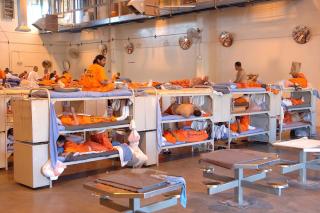 As for finding
work,
As for finding
work,
felons are prohibited from working in a wide range
of jobs
in California, including getting a barber’s
license—yet
barbering is one of the trades taught in
state prisons.
Parole officers’ caseloads are so large
that they now are
no longer thought of as agents of
rehabilitation helping
ex-offenders get work and a place
to live—that takes too
much time—but as agents of
surveillance and re-arrest.
With the odds stacked against
ex-prisoners on the housing
and job front, who can be
surprised if some fail to report
to their parole officer
just to get back to jail with its
guaranteed “three
hots and a cot”?
In short, without
major reforms here
on the outside—including a shift in the
way the media
reports crime, and a disentanglement of public
safety
issues from the self-serving interests of the
businesses,
local jurisdictions, and unions that profit in
some way
from having high prosecution and incarceration
rates,
plus an end to the self-serving interests
of
politicians—there will always be a
“corrections
crisis”
in
California.
ENDS


 Binoy Kampmark: Warring Against Encryption, Australia Is Coming For Your Communications
Binoy Kampmark: Warring Against Encryption, Australia Is Coming For Your Communications Gordon Campbell: On Fast Track Powers, Media Woes And The Tiktok Ban
Gordon Campbell: On Fast Track Powers, Media Woes And The Tiktok Ban Binoy Kampmark: Censorship Wars, Elon Musk, Safety Commissioners And Violent Content
Binoy Kampmark: Censorship Wars, Elon Musk, Safety Commissioners And Violent Content Gordon Campbell: On The Public Sector Carnage, And Misogyny As Terrorism
Gordon Campbell: On The Public Sector Carnage, And Misogyny As Terrorism Ramzy Baroud: NATO’s Never-ending War: The 75-Year-Old Bully Is Faltering
Ramzy Baroud: NATO’s Never-ending War: The 75-Year-Old Bully Is Faltering Eugene Doyle: Joining AUKUS Not In NZ’s National Interest
Eugene Doyle: Joining AUKUS Not In NZ’s National Interest